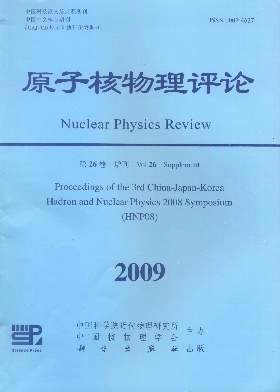Origin of Dynamically Generated Baryon Rsonances
doi: 10.11804/NuclPhysRev.26.S1.001
- Received Date: 1900-01-01
- Rev Recd Date: 1900-01-01
- Publish Date: 2020-05-11
-
Key words:
- baryon resonances /
- dynamical generation /
- chiral unitary approach
Abstract: We study the origin of baryon resonances which are dynamically generated in the chiral unitary approach.
We propose a natural renormalization scheme for the dynamical generation of resonances using the low energy chiral interaction and a general feature of the scattering theory. A deviation of a phenomenological scattering amplitude from the natural one is interpreted by an effective pole term interaction of genuine nature which can not be described by the mesonbaryon dynamics, reminiscent of the CDD pole. Applying the present method to physical mesonbaryon scatterings, we find that the Λ(1405) resonance is dominated by a mesonbaryon component forming a KNπΣ molecularlike structure, while the N(1535) resonance requires some pole contribution.
| Citation: | T.Hyodo, D.Jido, A.Hosaka. Origin of Dynamically Generated Baryon Rsonances[J]. Nuclear Physics Review, 2009, 26(5): 1-6. doi: 10.11804/NuclPhysRev.26.S1.001 |






 甘公网安备 62010202000723号
甘公网安备 62010202000723号 DownLoad:
DownLoad: